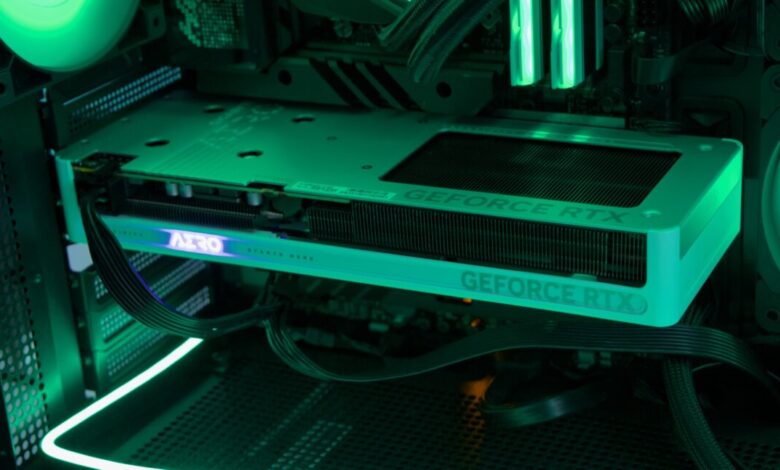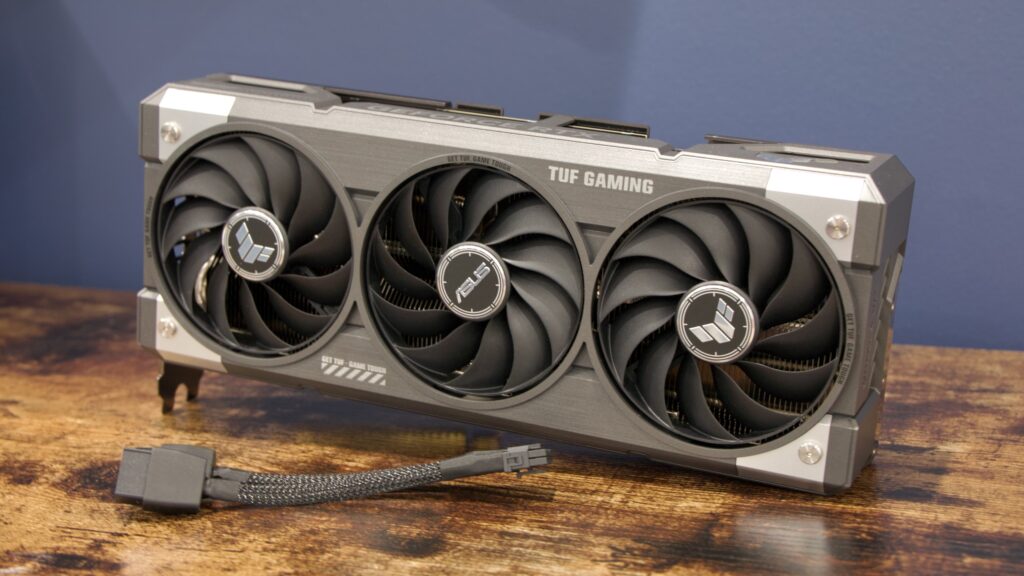Nvidia RTX 5060/5060 Ti review: You can have “affordable” or “future-proof.” Pick one.

It’s a whole lot of commotion for a GPU that is otherwise about as ho-hum as it is possible to be. It’s a noticeable but unexciting upgrade over its predecessor, and it performs a lot like a more-efficient RTX 3070 for $200 less (theoretically) than that card’s original MSRP.
But it’s getting harder to justify spending that kind of money on a GPU with just 8GB of RAM these days, especially when the GPU would be capable of decent 1440p performance if it had enough memory. Nvidia’s cheapest card that will give you more than 8GB of RAM is the 16GB version of the RTX 5060 Ti, which is supposed to start at $429 but sells for closer to $500 right now.
Specs, speeds, and testbed notes
| RTX 5060 Ti | RTX 4060 Ti | RTX 5060 | RTX 4060 | RTX 5050 (rumored) | RTX 3050 | |
|---|---|---|---|---|---|---|
| CUDA Cores | 4,608 | 4,352 | 3,840 | 3,072 | 2,560 | 2,560 |
| Boost Clock | 2,572 MHz | 2,535 MHz | 2,497 MHz | 2,460 MHz | Unknown | 1,777 MHz |
| Memory Bus Width | 128-bit | 128-bit | 128-bit | 128-bit | 128-bit | 128-bit |
| Memory bandwidth | 448GB/s | 288GB/s | 448GB/s | 272GB/s | Unknown | 224GB/s |
| Memory size | 8GB or 16GB GDDR7 | 8GB or 16GB GDDR6 | 8GB GDDR7 | 8GB GDDR6 | 8GB GDDR6 | 8GB GDDR6 |
| TGP | 180 W | 160 W | 145 W | 115 W | 130 W | 130 W |
Both the RTX 5060 and 5060 Ti use the same GPU silicon based on Nvidia’s Blackwell architecture; the 5060 Ti uses a fully enabled version of the GB206 die with 4,608 CUDA cores, a roughly 6 percent increase from the 4060 Ti. The 5060 uses a partially disabled version with 3,840 CUDA cores, a much larger 25 percent increase from the RTX 4060.
The boost in computing resources is augmented with the memory bandwidth boost that comes from switching from GDDR6 to GDDR7. This shift increases power consumption a bit (as does adding CUDA cores without making significant changes to the 5nm TSMC manufacturing process, used across both the 40- and 50-series cards), but it also improves memory bandwidth by over 50 percent despite sticking with a relatively narrow 128-bit memory bus.
An Asus version of the RTX 5060 (left) and the 16GB RTX 5060 Ti (right). Note the shorter PCB on the vanilla RTX 5060, and its use of the 8-pin power connector instead of the smaller 12-pin connector.
Andrew Cunningham

Andrew Cunningham
Asus’ RTX 5060 Ti comes with a forked adapter for power supplies that only have 8-pin connectors.
Andrew Cunningham
An Asus version of the RTX 5060 (left) and the 16GB RTX 5060 Ti (right). Note the shorter PCB on the vanilla RTX 5060, and its use of the 8-pin power connector instead of the smaller 12-pin connector.
Andrew Cunningham
Asus’ RTX 5060 Ti comes with a forked adapter for power supplies that only have 8-pin connectors.
Andrew Cunningham
Nvidia doesn’t have Founders Edition cards for either the 5060 Ti or 5060, leaving the work of building and distributing these GPUs to its board partners. We have a total of three cards here—a Gigabyte Aero RTX 5060, an Asus Prime RTX 5060, and an Asus TUF Gaming version of the 5060 Ti with 16GB of RAM. Different manufacturers will build their cards in slightly different ways, but it’s worth noting that both 5060 cards use a shorter PCB than the 5060 Ti, and both also get by with a single 8-pin power connector, while the 5060 Ti uses the 12-pin 12VHPWR/12V-2×6 connector. Make sure you get a version with the connectors you have and/or want.
Source link






